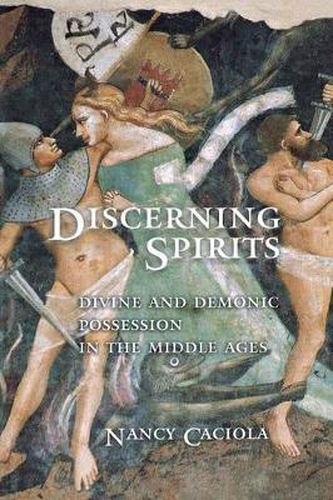Readings Newsletter
Become a Readings Member to make your shopping experience even easier.
Sign in or sign up for free!
You’re not far away from qualifying for FREE standard shipping within Australia
You’ve qualified for FREE standard shipping within Australia
The cart is loading…






Trance states, prophesying, convulsions, fasting, and other physical manifestations were often regarded as signs that a person was seized by spirits. In a book that sets out the prehistory of the early modern European witch craze, Nancy Caciola shows how medieval people decided whom to venerate as a saint infused with the spirit of God and whom to avoid as a demoniac possessed of an unclean spirit. This process of discrimination, known as the discernment of spirits, was central to the religious culture of Western Europe between 1200 and 1500. Attempts to make decisions about individuals who exhibited supernatural powers were complicated by the fact that the most intense exemplars of lay spiritually were women, and the fragile sex was deemed especially vulnerable to the snares of the devil. Ultimately, although a few late medieval women visionaries achieved the prestige of canonization, many more were accused of possession by demons. Caciola analyzes a broad array of sources from saints’ lives to medical treatises, exorcists’ manuals to miracle accounts, to find that observers came to rely on the discernment of bodies rather than seeking to distinguish between divine and demonic possession in purely spiritual terms.
$9.00 standard shipping within Australia
FREE standard shipping within Australia for orders over $100.00
Express & International shipping calculated at checkout
Trance states, prophesying, convulsions, fasting, and other physical manifestations were often regarded as signs that a person was seized by spirits. In a book that sets out the prehistory of the early modern European witch craze, Nancy Caciola shows how medieval people decided whom to venerate as a saint infused with the spirit of God and whom to avoid as a demoniac possessed of an unclean spirit. This process of discrimination, known as the discernment of spirits, was central to the religious culture of Western Europe between 1200 and 1500. Attempts to make decisions about individuals who exhibited supernatural powers were complicated by the fact that the most intense exemplars of lay spiritually were women, and the fragile sex was deemed especially vulnerable to the snares of the devil. Ultimately, although a few late medieval women visionaries achieved the prestige of canonization, many more were accused of possession by demons. Caciola analyzes a broad array of sources from saints’ lives to medical treatises, exorcists’ manuals to miracle accounts, to find that observers came to rely on the discernment of bodies rather than seeking to distinguish between divine and demonic possession in purely spiritual terms.